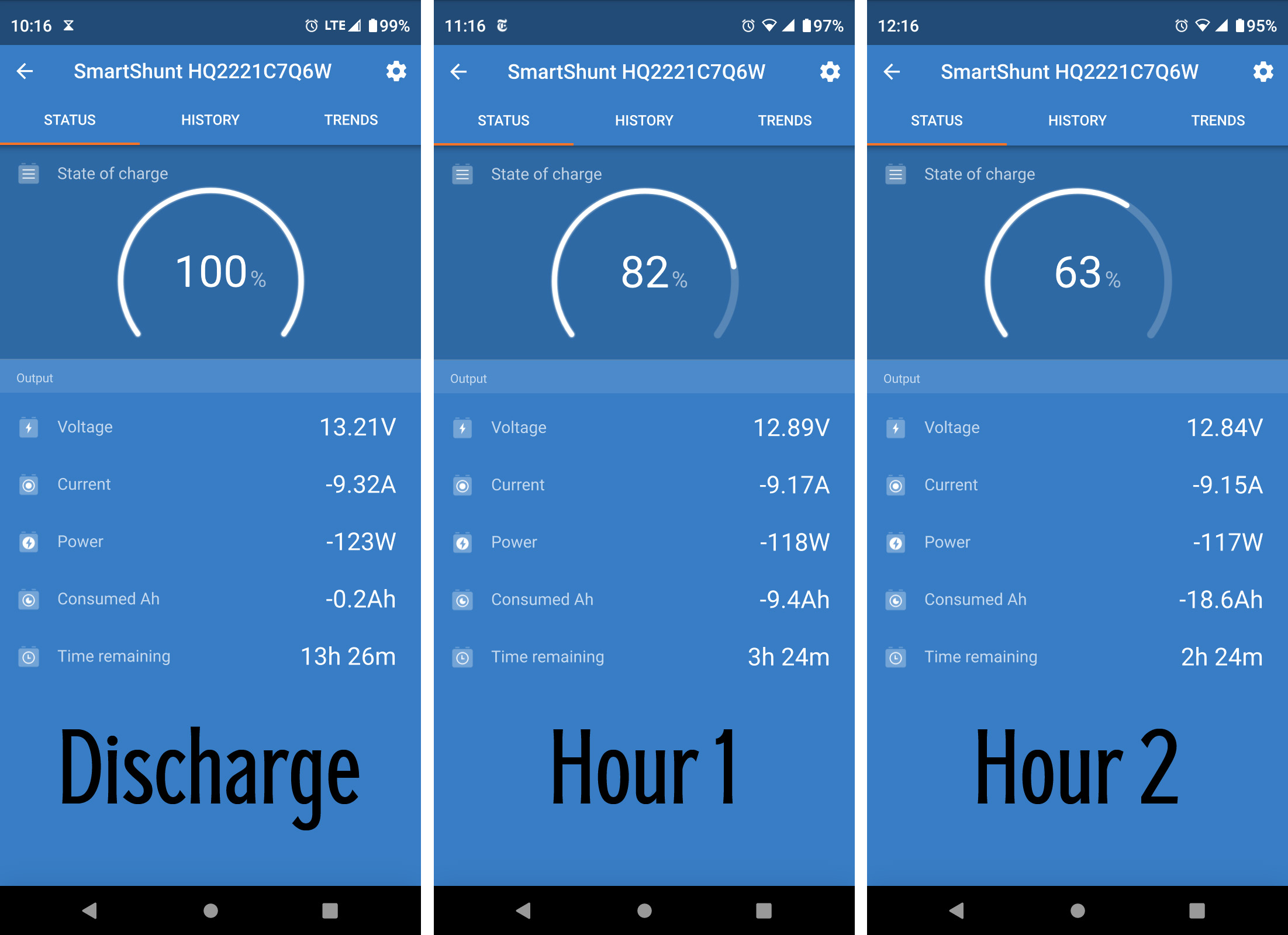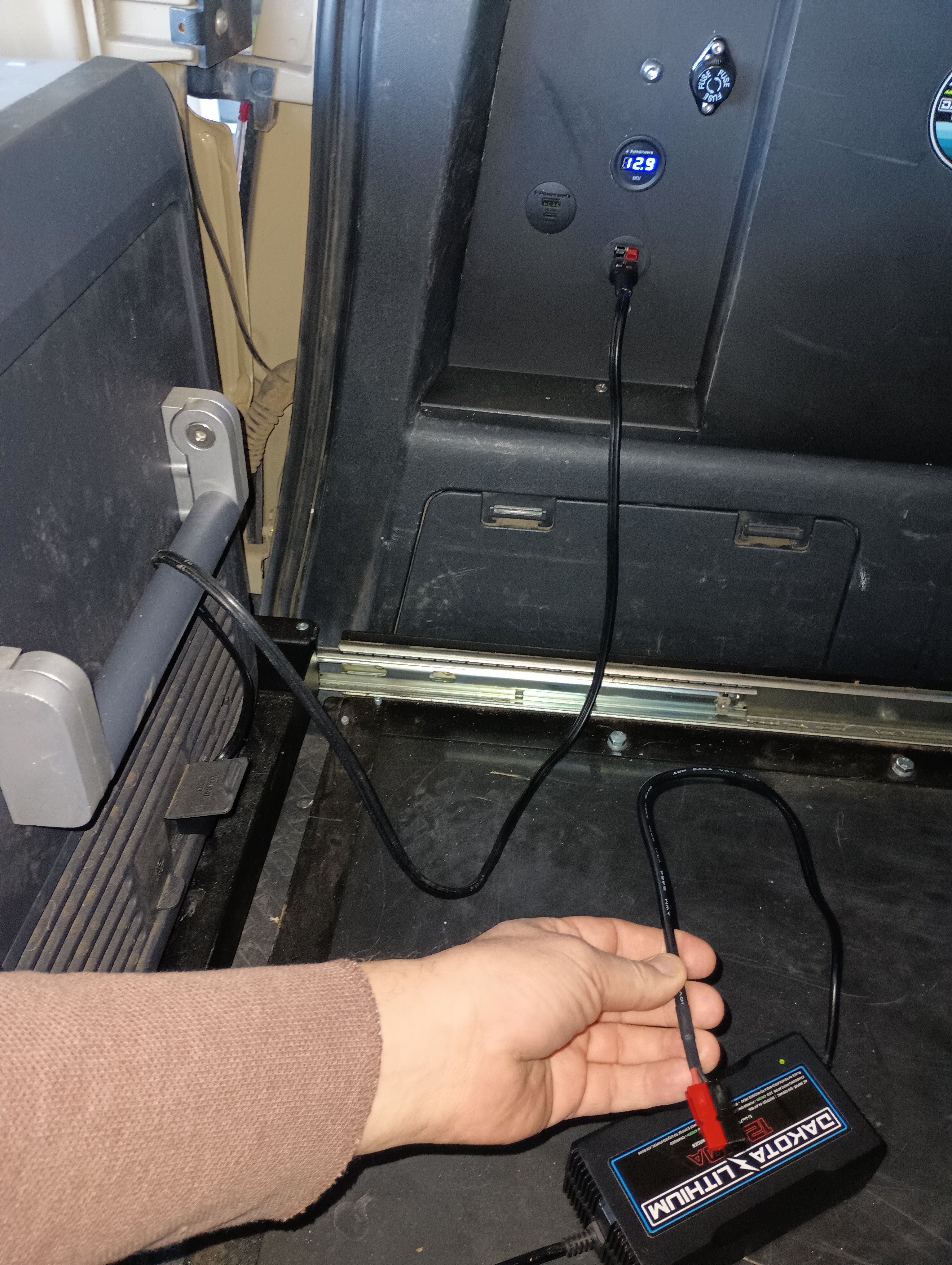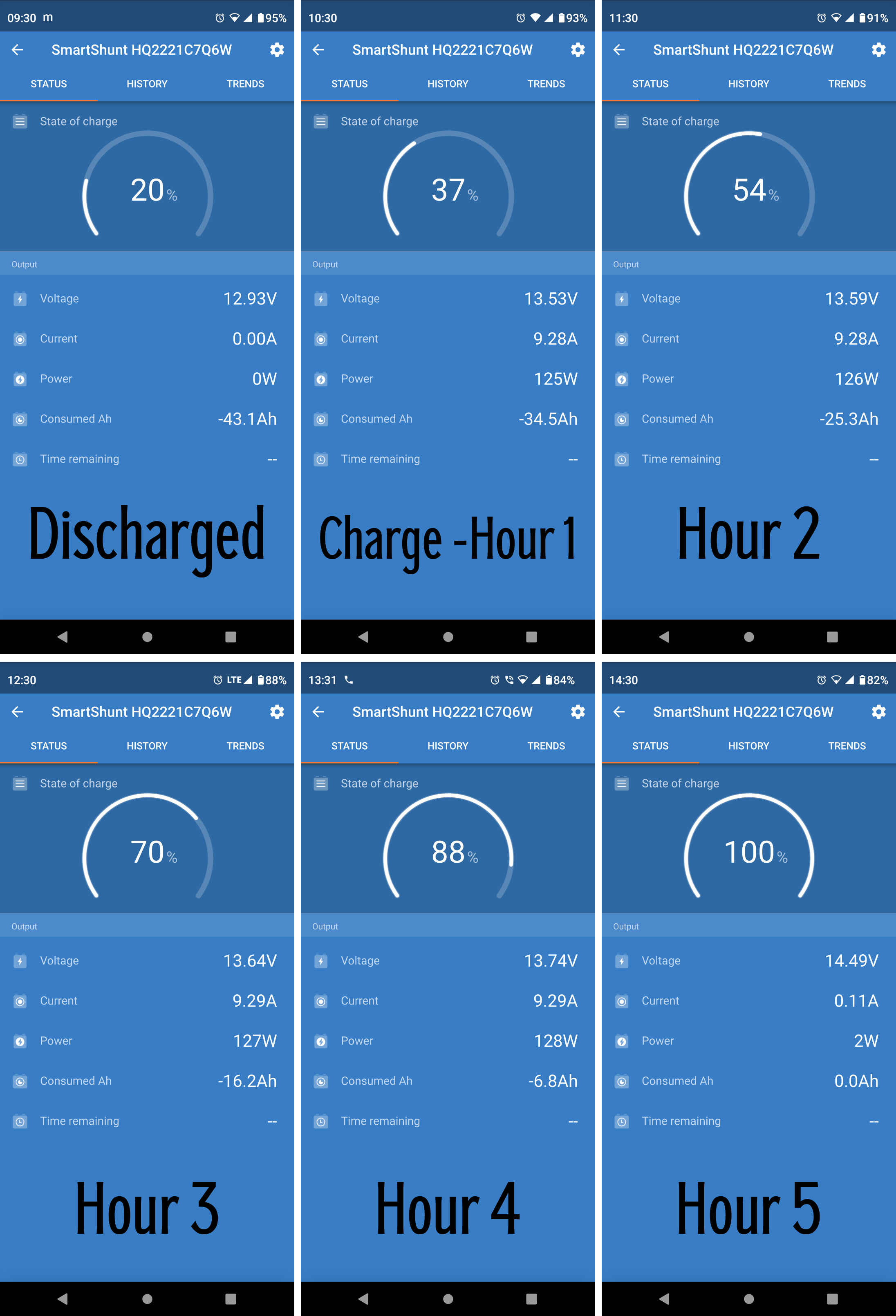Hi folks - I recently built a cabinet for a LiFePO4 house battery and Victron Orion-Tr Charger in the back of my truck, primarily to supply a Dometic 12v fridge. The setup works great, but the SmartShunt is miscalculating the amount of current used.
For example, yesterday, the SmartShunt went from 66% SOC to 100% SOC in three minutes. I anticipated it would, because the voltage was increasingly nearing the charger's specified Absorption voltage (14.4v) as I drove. The charger had already been on Absorption charge for nearly an hour of driving; and as I watched, it steadily increased voltage and decreased current, as it should. It was still reporting 66% SOC and -19.7Ah right before hitting the absorption voltage, and then it jumped to 100% SOC once the conditions for a full charge had been met (charge voltage, tail current, 3m wait).
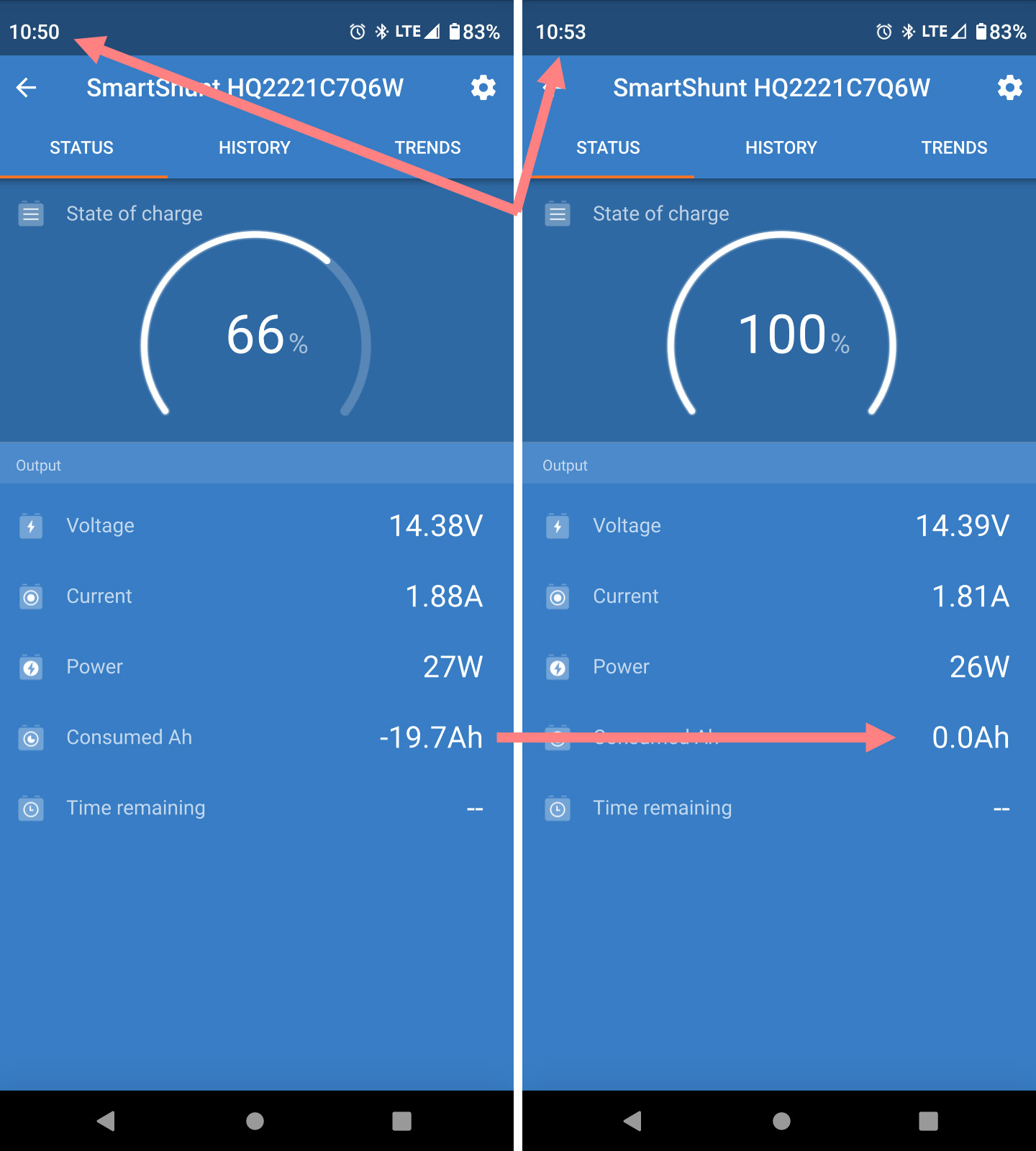
I believe the discrepancy has more to do with discharge calculations than charge calculations: in another experiment, the SmartShunt showed a 0% SOC at 12.58v which should be somewhere in the neighborhood of 5% SOC for the LiFePO4 (and where I don't intend to take it regularly); but more to the point, it was showing that I had used 72.8Ah, from my 54Ah battery. So somehow the calculations are off in a way that reports more current loss than has actually occurred. I observe that the reported SOC is always lagging on each and every recharge cycle.
I'll post my settings below to see if there's something I can adjust to get accurate measurements.
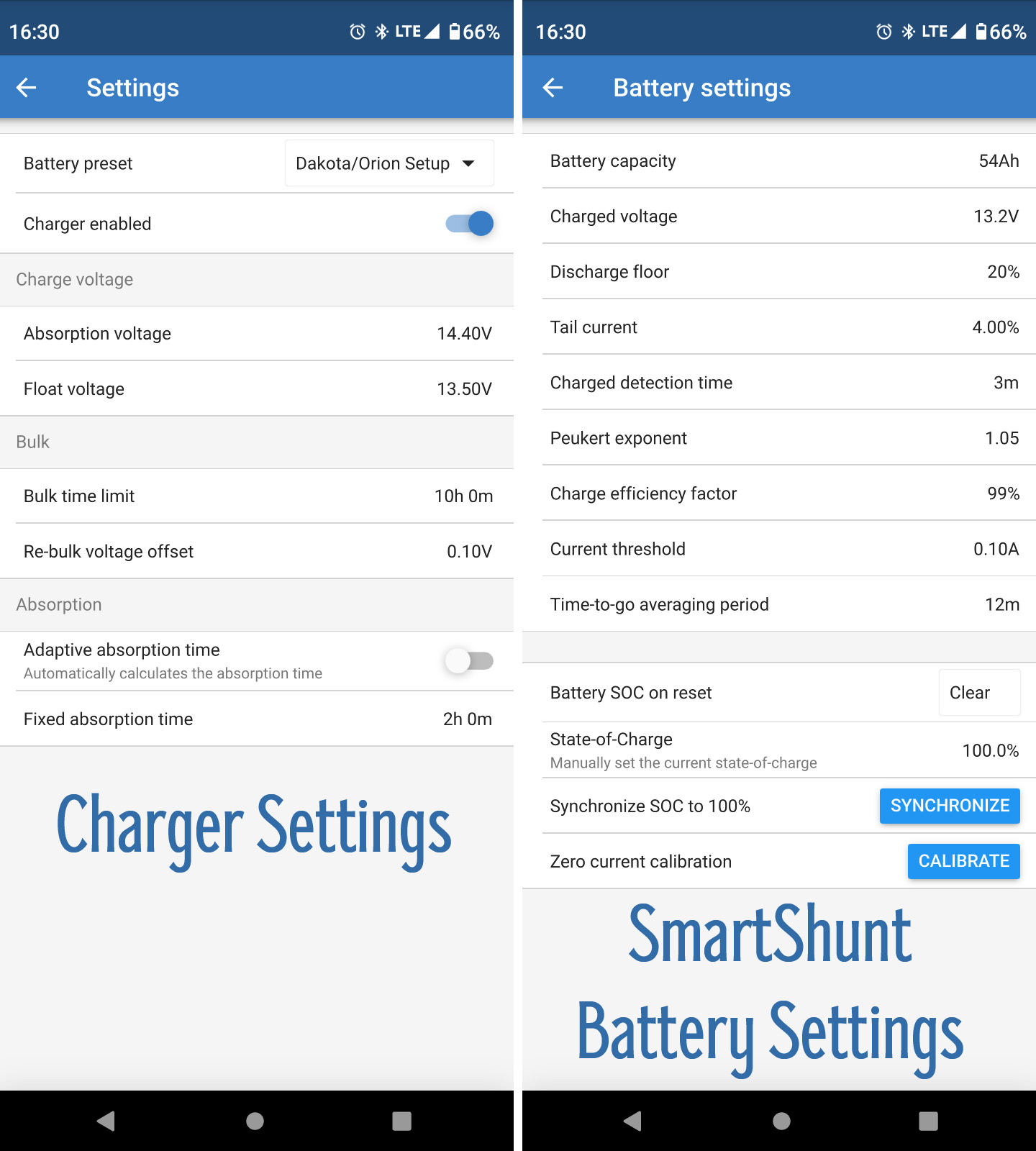
- I don't believe the issue is with any of the full charge settings like Charged voltage, Tail current, or Charged detection time, because based on indicated voltage, full charge is being reported at the correct time.
- I don't know much about the Peukert exponent but perhaps it's something to look at. I've read here that the PE doesn't account for temperature, but I don't know how significant a factor that could be.
- Charge efficiency factor is set to 99% as a default for LiFePO4 batteries - we can adjust that if it could help.
- I don't know how the Current threshold is used, but this is the default, and we can adjust it.
- The Time-to-go averaging period is 3m by default; I changed that to 12m trying to even out the cycles of the fridge's compressor - when it's running versus when it's off - which report very different Time-to-go values.
- My battery is a Dakota Lithium 54Ah LiFePO4
Any help appreciated - I've read here on the Victron support forum that the defaults are only starting points and that massaging the variables is necessary in some cases - but this is off by such a significant amount.


